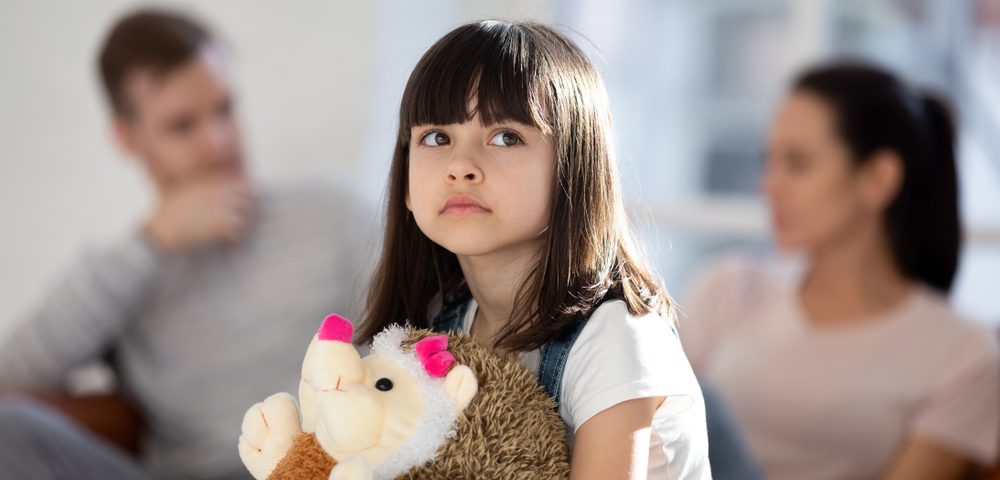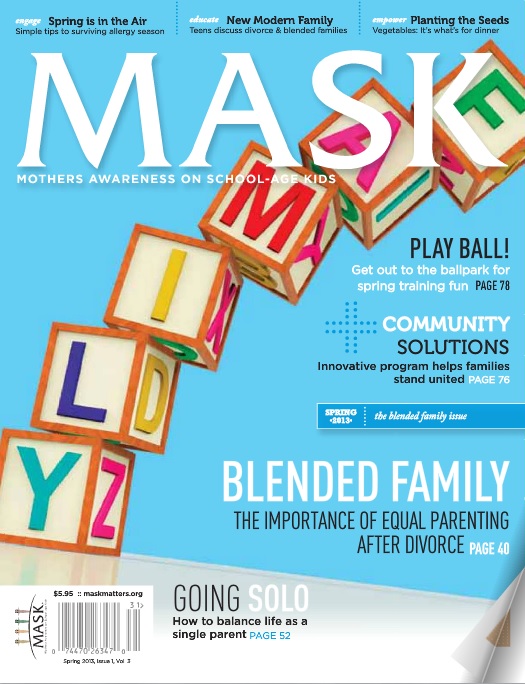
Expose the Truth
July 27, 2021
Blending the Family
July 28, 2021
My parents divorced when I was in the third grade. I knew it was coming when all I heard at night was fighting. I worried myself sick thinking, “Will my parents be OK? What does this mean for my sister and me? Why us?” I was 8, and I didn’t know who to talk to about these issues.
The tension at home got worse before it got better. Countless nights, I wanted to take my yellow sleeping bag to the woods, curl up in a ball and get away from it all. But I pushed on, going to school, practicing sports and staying with friends. Everyone in the family moved on, too…without ever talking about the problem.
By high school, I started to feel the effects of my parents’ divorce. I worried constantly, I thought everything would go wrong, and I pushed away good friends and mentors to protect myself from the pain of opening up. All along, no one knew I was struggling.
I can see now that hiding my feelings created even more pain and anxiety in the long run. More importantly, had I been aware of another way to cope, I’d have dealt with my feelings on the spot before they cascaded into bigger issues.
The research on divorce doesn’t suggest that the long-term effects are always harmful for people. In fact, heart-wrenching situations of any kind can eventually serve as gateways to positive growth and change. In other words, young people don’t have to be doomed for the rest of their lives because of divorce.
As for me, what was initially painful ended up shaping me into a stronger, more self-assured person. My resilience had been tested and I knew I could get through anything after that.
As it turns out, young people can be taught skills to rise above divorce and other trying situations. They can learn to manage tough emotions, put challenges in perspective, and stay connected to solutions to help them move forward each day with greater ease. Here are a few practices to try with them:
Breathe into a negative feeling. Grief, anxiety and frustration are necessary and normal. Practice greeting these emotions—in yourself or your children—with the same kindness and gentleness you would in a good friend who’s struggling. Teach your children to take a big, conscious breath in the presence of a difficult emotion.
Express yourself. Expressing your own emotions appropriately offers children a model for talking about what they’re feeling. This will give young people, who are especially prone to keeping problems in, a chance to talk about tough emotions more comfortably.
It’s not their fault. Young children often take divorce personally. Teach them that blaming themselves entirely for problems can undermine their strength and resilience. Also, be mindful of your own emotional tendencies in a sticky situation to avoid spillover onto them.
Notice what’s right. Safe to say, your life feels consumed by solving problems. Even out the playing field by noticing and discussing good things happening each day—no matter how small. It’ll energize your spirit and help put challenges in perspective.
Shift the focus to hope. It’s easy to make a bad situation worse by asking questions such as, “Why me? When will this be over?” Be intentional about asking questions that elicit hope. For example, “What’s possible here? How can we support each other through this?” Hope helps everyone feel more in control of the situation.
Share the burden. If you’re having a hard time getting your child to open up, seek out a mentor or coach. Having a go-to person outside the home can provide an opportunity for young people to talk about what’s really on their minds.
Children are bound to face challenges. While many will fight their way through miserable situations, I’m convinced we can do a better job preparing them to navigate the turbulent waters of divorce. Offering your support in this process can dramatically increase the chances they’ll come out stronger on the other end.
By \\ Breon Michel
For more parenting solutions on Divorce and Blended Families add the Blended Families Issue to your MASK Library
MASK the Parenting Magazine a quarterly publication providing solutions for Today’s Families.
The parenting manual offering solutions to the modern-day challenges families face. From Pre-K
through College stay up to date on the modern day issues families face.
Are you up to date on the issues your child is facing?
MASK Mothers Awareness on School-age Kids offers parenting solutions for today’s families. MASK tackles important topics – from drugs and alcohol to bullying and Internet safety -and gives students, parents and the community the knowledge and tools to manage these potential challenges.
Subscribe today! https://www.tools4teaching.com/product/mask-the-magazine/
Download and share the MASKmatters app now! Made for children, parents, teachers and in Spanish.
Have solutions at your fingertips
Available free on apple and google play links below
Apple https://apps.apple.com/us/app/maskmatters/id1482305692
Google Play
https://play.google.com/store/apps/details?id=com.maskmatters.maskmattersapp&hl=en_US&gl=US





